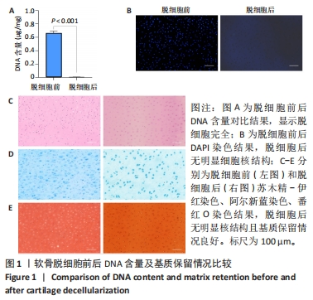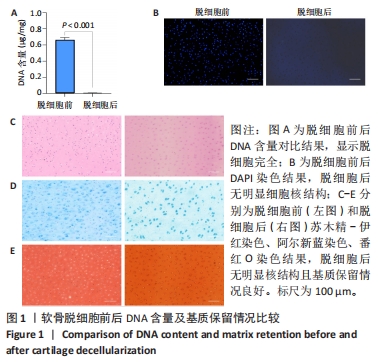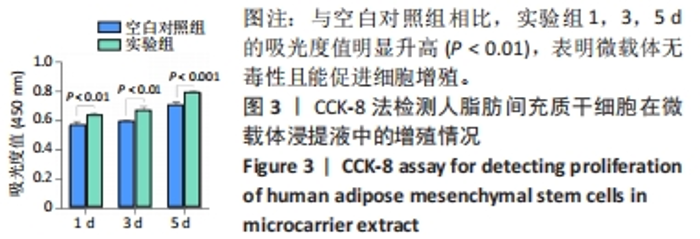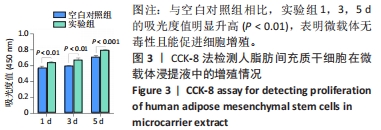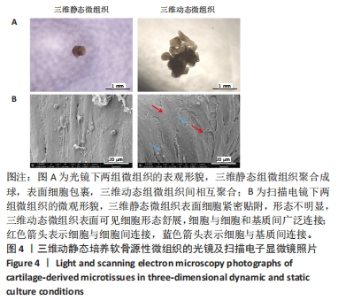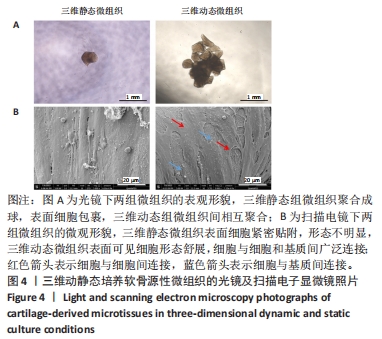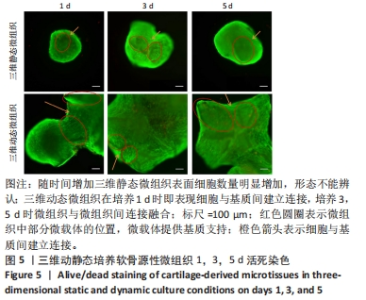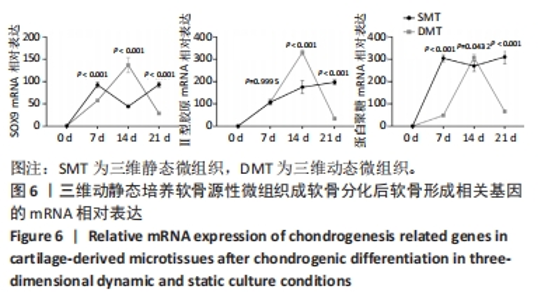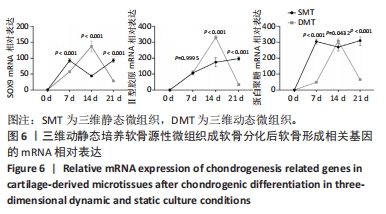[1] KWON H, BROWN WE, LEE CA, et al. Surgical and tissue engineering strategies for articular cartilage and meniscus repair. Nat Rev Rheumatol. 2019;15(9):550-570.
[2] CHEN FH, ROUSCHE KT, TUAN RS. Technology Insight: adult stem cells in cartilage regeneration and tissue engineering. Nat Clin Pract Rheumatol. 2006;2(7):373-382.
[3] GRACEFFA V, VINATIER C, GUICHEUX J, et al. Chasing Chimeras - The elusive stable chondrogenic phenotype. Biomaterials. 2019;192:199-225.
[4] CAMP CL, STUART MJ, KRYCH AJ. Current concepts of articular cartilage restoration techniques in the knee. Sports Health. 2014;6(3):265-273.
[5] KUANG B, YANG Y, LIN H. Infiltration and In-Tissue Polymerization of Photocross-Linked Hydrogel for Effective Fixation of Implants into Cartilage-An In Vitro Study. ACS Omega. 2019;4(20):18540-18544.
[6] BUNPETCH V, ZHANG ZY, ZHANG X, et al. Strategies for MSC expansion and MSC-based microtissue for bone regeneration. Biomaterials. 2019;196:67-79.
[7] BARTHOLD JE, MARTIN BM, SRIDHAR SL, et al. Recellularization and Integration of Dense Extracellular Matrix by Percolation of Tissue Microparticles. Adv Funct Mater. 2021;31(35):2103355.
[8] SCHWARZ S, KOERBER L, ELSAESSER AF, et al. Decellularized cartilage matrix as a novel biomatrix for cartilage tissue-engineering applications. Tissue Eng Part A. 2012;18(21-22):2195-2209.
[9] ZHOU S, ZHANG S, JIANG Q. Extracellular Matrix-based Materials for Bone Regeneration// Racing for the Surface. Cham: Springer, 2020:489-533.
[10] JENSEN C, TENG Y. Is It Time to Start Transitioning From 2D to 3D Cell Culture? Front Mol Biosci. 2020;7:33.
[11] CHEN R, FENG T, CHENG S, et al. Evaluating the defect targeting effects and osteogenesis promoting capacity of exosomes from 2D-and 3D-cultured human adipose-derived stem cells. Nano Today. 2023;49:101789.
[12] WANG S, YANG L, CAI B, et al. Injectable hybrid inorganic nanoscaffold as rapid stem cell assembly template for cartilage repair. Natl Sci Rev. 2022;9(4):nwac037.
[13] AGRAWAL P, PRAMANIK K, BISWAS A, et al. In vitro cartilage construct generation from silk fibroin- chitosan porous scaffold and umbilical cord blood derived human mesenchymal stem cells in dynamic culture condition. J Biomed Mater Res A. 2018;106(2):397-407.
[14] SULAIMAN S, CHOWDHURY SR, FAUZI MB, et al. 3D Culture of MSCs on a Gelatin Microsphere in a Dynamic Culture System Enhances Chondrogenesis. Int J Mol Sci. 2020;21(8):2688.
[15] WANG B, LIU W, LI JJ, et al. A low dose cell therapy system for treating osteoarthritis: In vivo study and in vitro mechanistic investigations. Bioact Mater. 2021;7:478-490.
[16] KUDVA AK, DIKINA AD, LUYTEN FP, et al. Gelatin microspheres releasing transforming growth factor drive in vitro chondrogenesis of human periosteum derived cells in micromass culture. Acta Biomater. 2019;90:287-299.
[17] TANDON N, MAROLT D, CIMETTA E, et al. Bioreactor engineering of stem cell environments. Biotechnol Adv. 2013;31(7):1020-1031.
[18] YU H, YOU Z, YAN X, et al. TGase-Enhanced Microtissue Assembly in 3D-Printed-Template-Scaffold (3D-MAPS) for Large Tissue Defect Reparation. Adv Healthc Mater. 2020;9(18):e2000531.
[19] BUCKWALTER JA, MANKIN HJ. Articular cartilage: tissue design and chondrocyte-matrix interactions. Instr Course Lect. 1998;47:477-486.
[20] MAČIULAITIS J, REKŠTYTĖ S, ŪSAS A, et al. Characterization of tissue engineered cartilage products: Recent developments in advanced therapy. Pharmacol Res. 2016;113(Pt B):823-832.
[21] ROJEK KO, ĆWIKLIŃSKA M, KUCZAK J, et al. Microfluidic Formulation of Topological Hydrogels for Microtissue Engineering. Chem Rev. 2022;122(22):16839-16909.
[22] NEGORO T, TAKAGAKI Y, OKURA H, et al. Trends in clinical trials for articular cartilage repair by cell therapy. NPJ Regen Med. 2018;3:17.
[23] KIM YS, MAJID M, MELCHIORRI AJ, et al. Applications of decellularized extracellular matrix in bone and cartilage tissue engineering. Bioeng Transl Med. 2018;4(1):83-95.
[24] ZHANG C, XIE B, ZOU Y, et al. Zero-dimensional, one-dimensional, two-dimensional and three-dimensional biomaterials for cell fate regulation. Adv Drug Deliv Rev. 2018;132:33-56.
[25] YIN X, MEAD BE, SAFAEE H, et al. Engineering Stem Cell Organoids. Cell Stem Cell. 2016;18(1):25-38.
[26] QIAN X, JACOB F, SONG MM, et al. Generation of human brain region-specific organoids using a miniaturized spinning bioreactor. Nat Protoc. 2018;13(3):565-580.
[27] SHANG F, YU Y, LIU S, et al. Advancing application of mesenchymal stem cell-based bone tissue regeneration. Bioact Mater. 2020;6(3):666-683.
[28] SWARTZ MA, FLEURY ME. Interstitial flow and its effects in soft tissues. Annu Rev Biomed Eng. 2007;9:229-256.
[29] ZHU J, YANG S, QI Y, et al. Stem cell-homing hydrogel-based miR-29b-5p delivery promotes cartilage regeneration by suppressing senescence in an osteoarthritis rat model. Sci Adv. 2022;8(13):eabk0011.
[30] HODGKINSON T, KELLY DC, CURTIN CM, et al. Mechanosignalling in cartilage: an emerging target for the treatment of osteoarthritis. Nat Rev Rheumatol. 2022;18(2):67-84.
[31] SANI M, HOSSEINIE R, LATIFI M, et al. Engineered artificial articular cartilage made of decellularized extracellular matrix by mechanical and IGF-1 stimulation. Biomater Adv. 2022;139:213019.
[32] DING SL, ZHAO XY, XIONG W, et al. Cartilage Lacuna-Inspired Microcarriers Drive Hyaline Neocartilage Regeneration. Adv Mater. 2023;35(30):e2212114.
|
